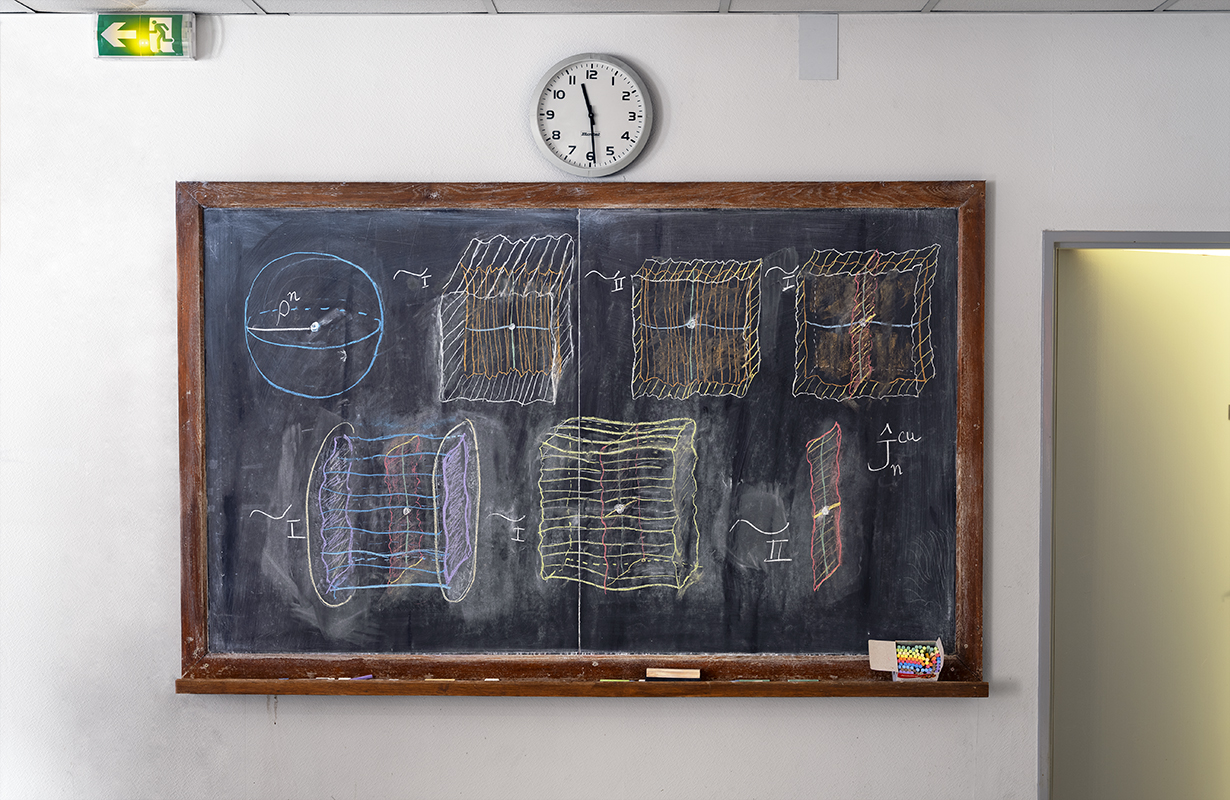

Inspiration struck Jessica Wynne on the roof of an elementary school in India where children worked at chalkboards set against the sky.
The photographer and associate professor had long wanted to document the creative world of mathematicians, an idea inspired by her friends Amie Wilkinson and Benson Farb, professors of mathematics at the University of Chicago. Their desire to create and discover what didn’t yet exist reminded Wynne of an artist’s process; but how to capture that pursuit in a photograph? The rooftop visit during a study-abroad trip with her FIT students provided the answer she’d been looking for.
“I was trying to figure out a way to document the beauty and mystery I saw in their work—things most people don’t associate with mathematics,” Wynne says. “Photographing their chalkboards gave me an interesting window into their world.”

Do Not Erase, Wynne’s celebration of mathematicians’ chalkboards, will be published by Princeton University Press in the spring of 2021. Created with help from enthusiastic mathematicians around the world, the collected photographs capture formulas that tackle topics including dynamic motion, kinetic theory, and hyperbolic geometry. Though the formulas are indecipherable to the non-expert eye, an understanding of math isn’t needed to appreciate the passion beneath the work. The New York Times, The Guardian, and Fortune have already published stories about the book.
Jessica Wynne
Wynne discovered photography when she was 16. After growing up in New England listening to stories about her mother’s childhood in southern India—Wynne’s step-grandfather was Indian—she decided to move across the world on her own to finish high school at her mother’s alma mater, the Kodaikanal International School in the state of Tamil Nadu. There, Wynne began taking photographs as a way to engage with the vibrant new world around her.
“As an outsider, it gave me access to people and places,” she says. “It was this awakening for me to realize I could use photography to understand a new place.”

The experience marked the beginning of Wynne’s interest in documenting “hidden worlds”; she has photographed high school wrestlers and the residents of single-room-occupancy hotels (SROs) in San Francisco. Photos from that project, made while she was an undergraduate at the San Francisco Art Institute, were later included in W.W. Norton’s 25 and Under: Photographers.
“Wanting to understand something unfamiliar is what drives me as an artist,” Wynne says.

Along with the book, a September exhibition is planned at the prestigious Edwynn Houk Gallery in New York (which also represents Diane Arbus, Dorothea Lange, and Man Ray), but for Wynne, that won’t be the end. There are more mathematicians to meet, more blackboards to discover.
“It’s this vast mysterious universe, and I feel like I’ve only glimpsed the surface,” she says.
Top Photo: Wynne sees beauty in the blackboards, but also invisible layers of history. This slate board, used by mathematicians for more than a century, was marked up for Wynne by Wilkinson during a visit to the Henri Poincaré Institute in Paris. The equation, related to the mechanism for chaotic dynamics, depicts a sequence of shapes that, in a precise sense, are equivalent to each other. It is one of Wynne’s favorite photographs in the collection.